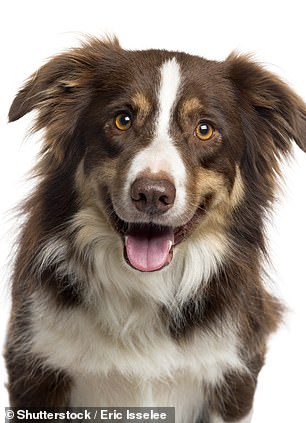Revealed: The dogs that give humans the most expressive stares – so how does your pooch stack up?
>
- Scientists have revealed the dogs that give people the most expressive looks
- They say it’s not about the breed, it’s about the facial markings of dogs
They’re often called “man’s best friend,” but a new study suggests that when it comes to communication, not all dogs are equal.
Researchers at George Washington University have revealed the dogs that give people the most expressive looks.
Their findings suggest it’s not about breed, but about dogs’ facial markings.
According to the researchers, those with one plain face are perceived as more expressive than those with multi-colored faces.
“Knowing what dogs are trying to tell us and what they are thinking or feeling can greatly improve both their experience and ours when we are together,” said Courtney Sexton, lead author of the study.

Their findings suggest it’s not about breed, but about dogs’ facial markings. According to the researchers, those with one plain face are perceived as more expressive than those with multi-colored faces
Since they were domesticated about 16,000 years ago, dogs have developed an incredibly unique relationship with humans.
For example, previous studies have shown how dogs have the ability to make their owners understand what their barks and growls mean.
In their new study, the team wanted to investigate how dogs’ faces affect their ability to communicate with people.
The researchers recruited 100 dog owners, who were asked to record their pets under various conditions.
The team then used a coding system called the Dog Facial Action Coding System to analyze each dog’s behavior.
This allowed them to create a new system to scale and evaluate facial markings and patterns on the dogs’ faces.
Participants were also asked to complete a survey about their dog and its expressions.
The results showed that dogs with clearer faces appeared to make more facial expressions while interacting with their owners than pups with more complex facial markings.
Older dogs seemed to be less expressive than younger pups, which the researchers say may be because older dogs have a more established relationship with their owner and thus don’t have to work as hard to be understood.
Meanwhile, working dogs or highly trained dogs were also more expressive.
These findings have real-world implications, according to the researchers.
“As dogs become more integrated into human society, it is important that we understand how they communicate with us and how we can communicate with them better,” says Ms Sexton.
“If we think about this in terms of welfare contexts, or dogs in shelters, or working dogs and service animals, or interactions with dogs in your neighborhood or people at a dog park, knowing what dogs are trying to tell us and what they might be thinking or feeling can really enhance both their experience and ours when we are together.”
